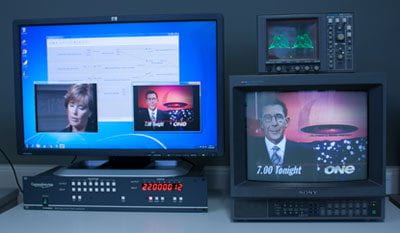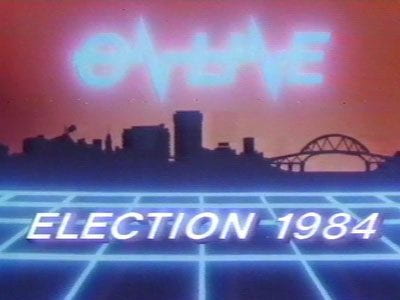
Media Services equipment used to digitise content from older formats.
“New Zealand had its own history, its own politics, its own literature, which was every bit as important as that of Britain”
On the 1st June 1960 New Zealand experienced its first official television broadcast. Transmitting from the AKTV-2 Shortland Street studios a mixture of entertainment was on view including an episode of ‘The Adventures of Robin Hood’, an interview with visiting English ballerina Beryl Grey, and a live performance by the Howard Morrison Quartet1. The service rapidly expanded and by 1965 studios were operating in the four main centres, seven nights a week, for a total of 50 hours2.
Broadcast media captured as a research resource
University of Auckland’s Professor Robert Chapman, who provided the country’s first televised election coverage, was a firm believer that “New Zealand had its own history, its own politics, its own literature, which was every bit as important as that of Britain”3. This led to him recording large numbers of radio and television broadcasts to inform his own research, eventually became a resource of the Politics and International Relations Department.
In 2011 these recordings became a key Libraries and Learning Services audio visual collection, known as the Chapman Archive. Broadcast media has come to Libraries and Learning Services from a number of other sources as well, including the Māori Studies Department, and the Faculty of Arts.

Television New Zealand. (Producer). (1984, Jun. 26). On Line: Election 1984 [Television series episode]. New Zealand: TVNZ. A television talk-back experiment, where politicians engaged in live phone-in dialogue with viewers.
We are working to convert the older formats of recorded broadcasts into digitised recordings, and the permanent collection continues to grow. Online access is through the modern TV and Radio4 interface.
Collection strengths include:
- Extensive coverage of New Zealand news and current affairs
- New Zealand general election coverage back to 1966
- Political commentary
- New Zealand and Pacific arts programming
- Māori language programming
- Themed playlists
Professor Chapman would be proud to know that TV and Radio continues the tradition of support to University of Auckland researchers with a window into New Zealand’s past reflecting our political, social, cultural and economic history.
Discover more for yourself within TV and Radio today.
William Hamill, Media Services
1 Boyd-Bell, R. (1985). New Zealand television: the first 25 years. Auckland, New Zealand: Reed Methuen.
2 Ministry for Culture and Heritage. (2016). New Zealand’s first official TV broadcast. Retrieved from https://nzhistory.govt.nz/first-official-tv-broadcast.
3 Aimer, P., Falconer, P., Rudman, B. (2004, June 5). New Zealand Politics a lifelong passion. New Zealand Herald, p. A26.
4 TV and Radio is an online resource available to the University of Auckland community of staff, students and researchers.
